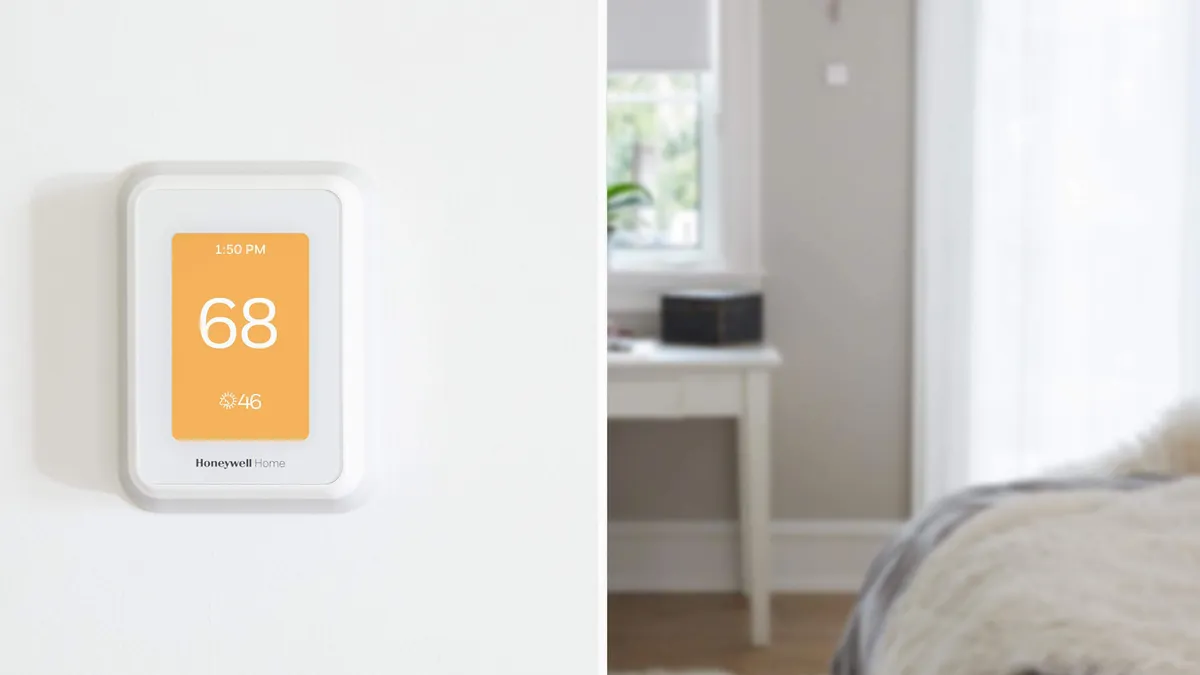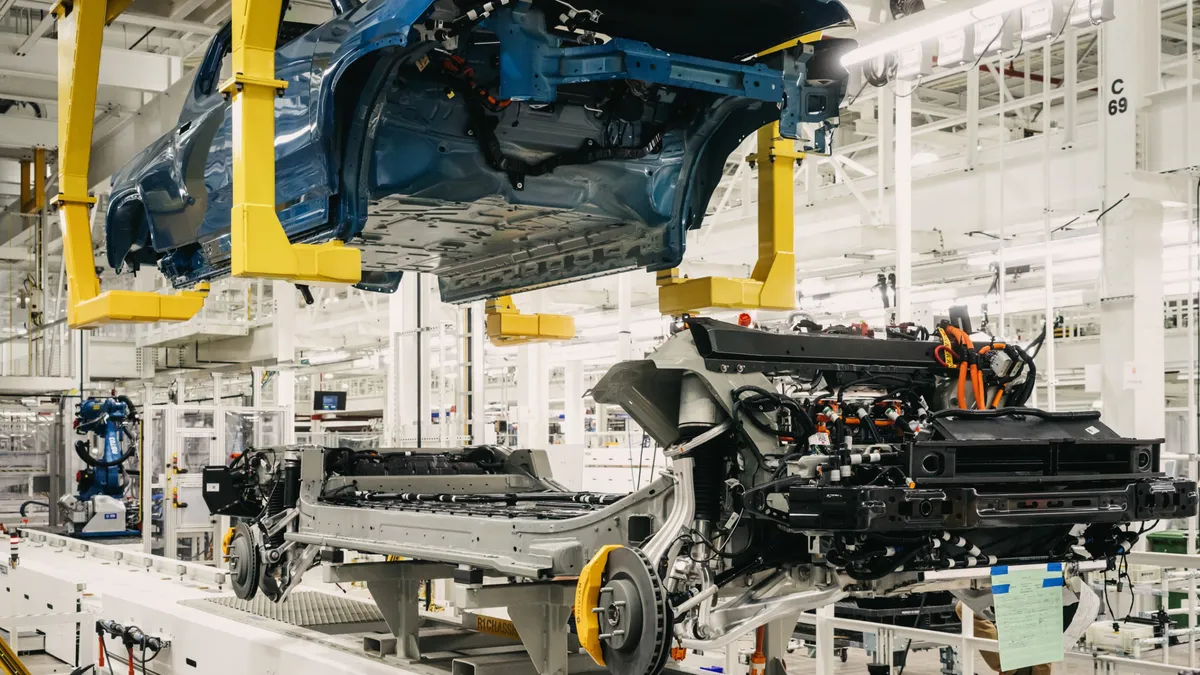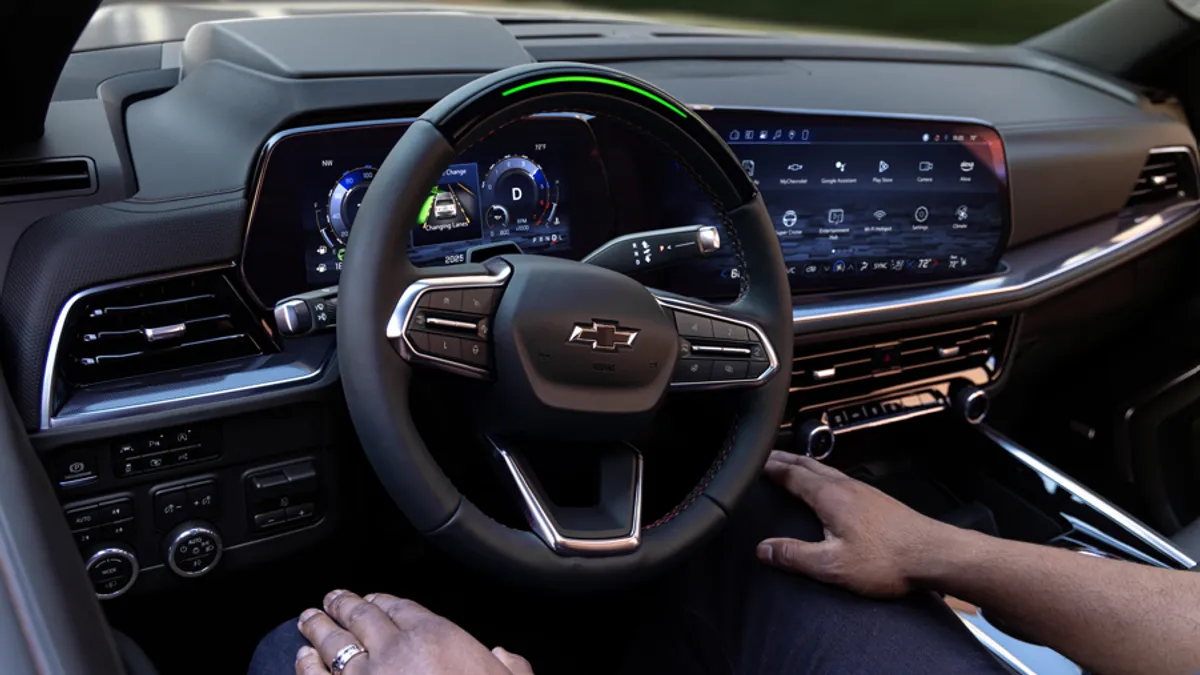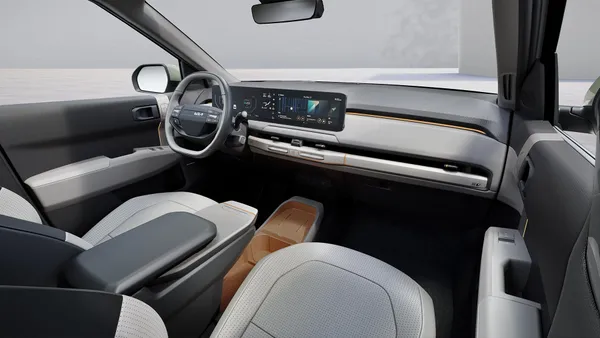Dive Brief:
- Ford is participating in a vehicle-to-home energy management project with Resideo, a maker of smart home products including thermostats, the automaker said in a press release.
- The two companies will explore ways of using the battery pack of Ford’s electric vehicle as a supplemental power source.
- The project, which is expected to be completed in the first half of 2024, will simulate the integration of Resideo's smart thermostats with the energy stored in the battery of the F-150 Lightning to more efficiently manage the power needs of a home's heating and cooling systems.
Dive Insight:
Ford, along with other automakers, is exploring various ways to tap into the reserve power of its electric vehicle batteries to help support the grid during peak times.
This latest project with Resideo will assess how coordination of the bidirectional capabilities of a Ford EV and a smart thermostat can help minimize energy usage during peak demand. In addition, Ford and Resideo will assess ways of maximizing the use of cleaner energy from the grid when it’s available.
“Driving electric is unlocking an entirely new world of personal energy management that could not only save our customers time and money, but also help support a more sustainable energy grid,” said Bill Crider, head of global charging and energy services at Ford. “Successful vehicle-to-home energy management solutions would give Ford EV drivers as well as utilities and power companies the confidence to accelerate future vehicle-to-grid services never-before thought possible with traditional vehicles.”
The project builds on Ford’s Intelligent Backup Power feature that’s available for the F-150 Lightning. It connects the vehicle to a home’s power source when it's plugged in to deliver additional power. The bidirectional charging capabilities of the F-150 Lightning requires Ford’s Home Integration System, which serves as a switch to automatically route power when needed.
Volkswagen announced a similar project last week with HagerEnergy GmbH in Sweden allowing the automaker’s ID EV customers to use the energy of their vehicle’s battery in conjunction with a stationary energy system to provide supplemental power to a home during peak times or in the event of a power failure.
In August, General Motors said it will offer bidirectional charging capabilities for its Ultium-based electric vehicles by 2026. It will allow GM’s future EV customers to store and transfer energy to a home during peak demand or during a power outage using their vehicle’s battery or with an optional stationary storage unit.
In April, California Sen. Nancy Skinner proposed a bill that would require all new electric vehicles sold in California to support bidirectional charging starting in 2027 to help support the state’s power grid. The proposal is supported by dozens of environmental, health and community groups. However, experts warn the proposal has some technological hurdles to overcome and could increase the cost of electric vehicles.












